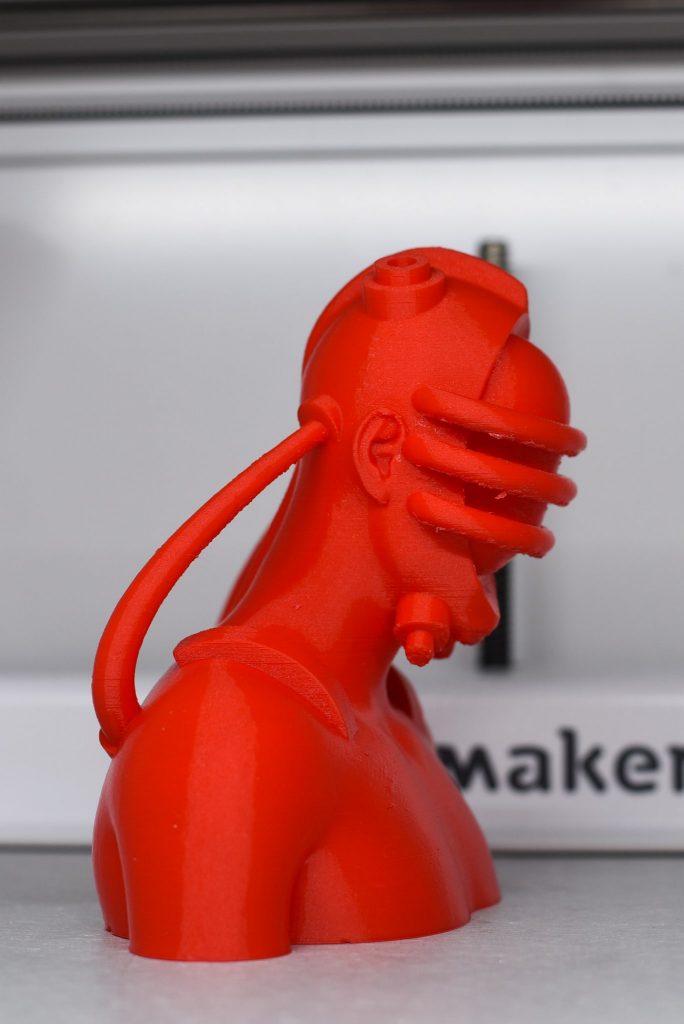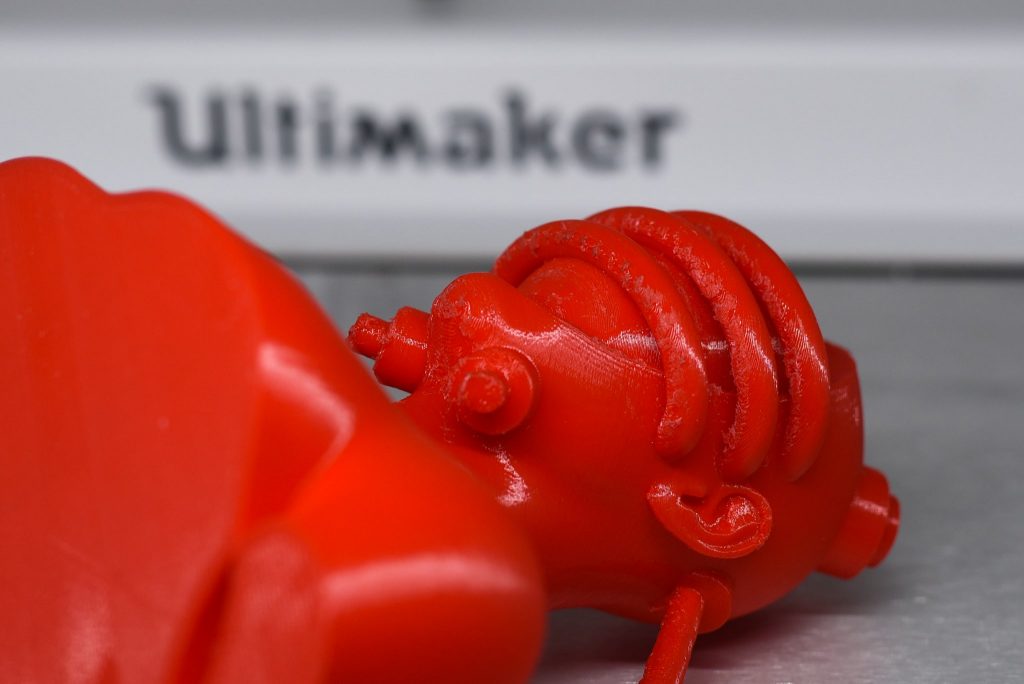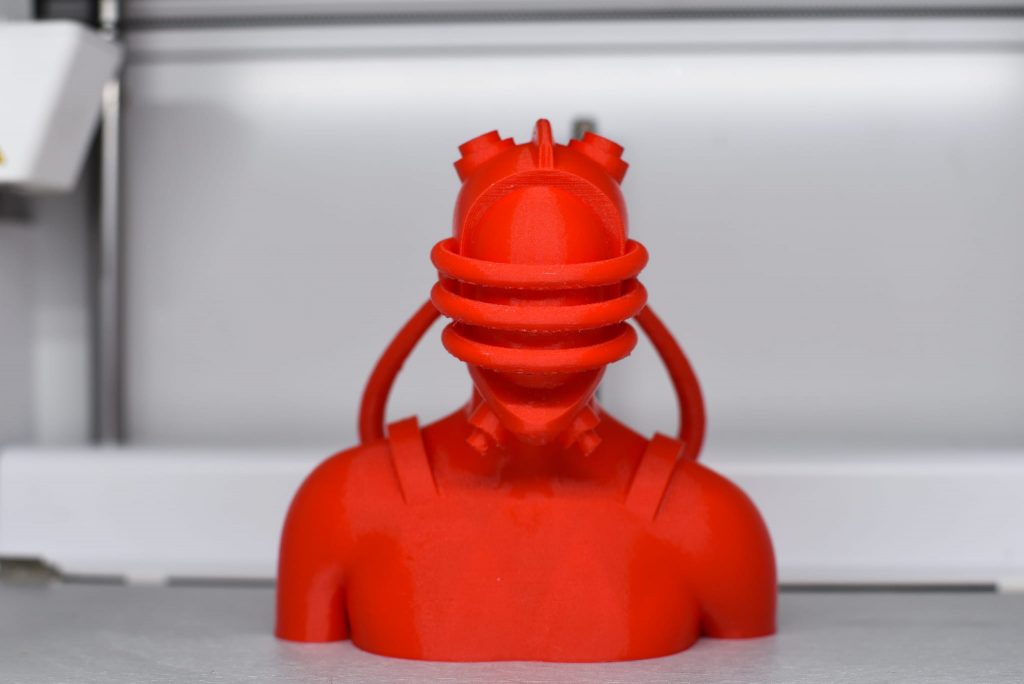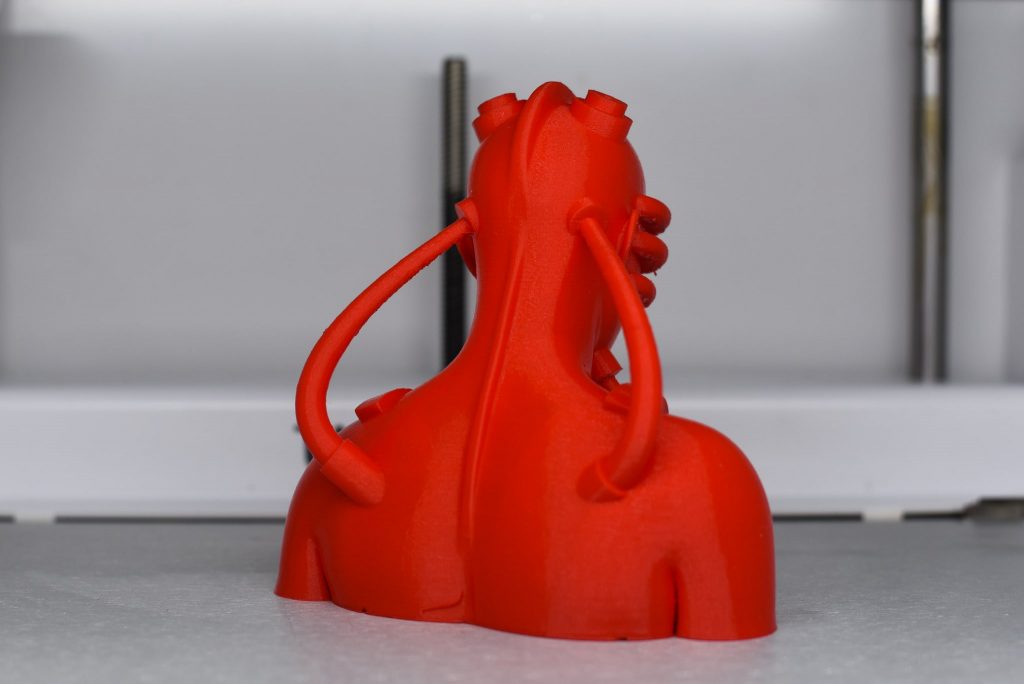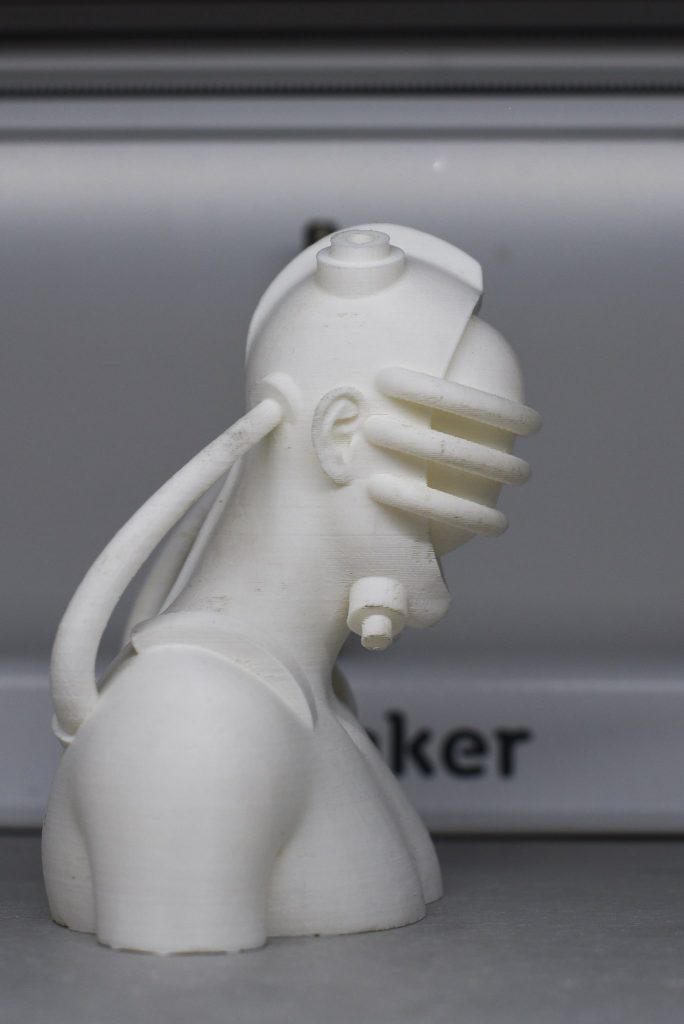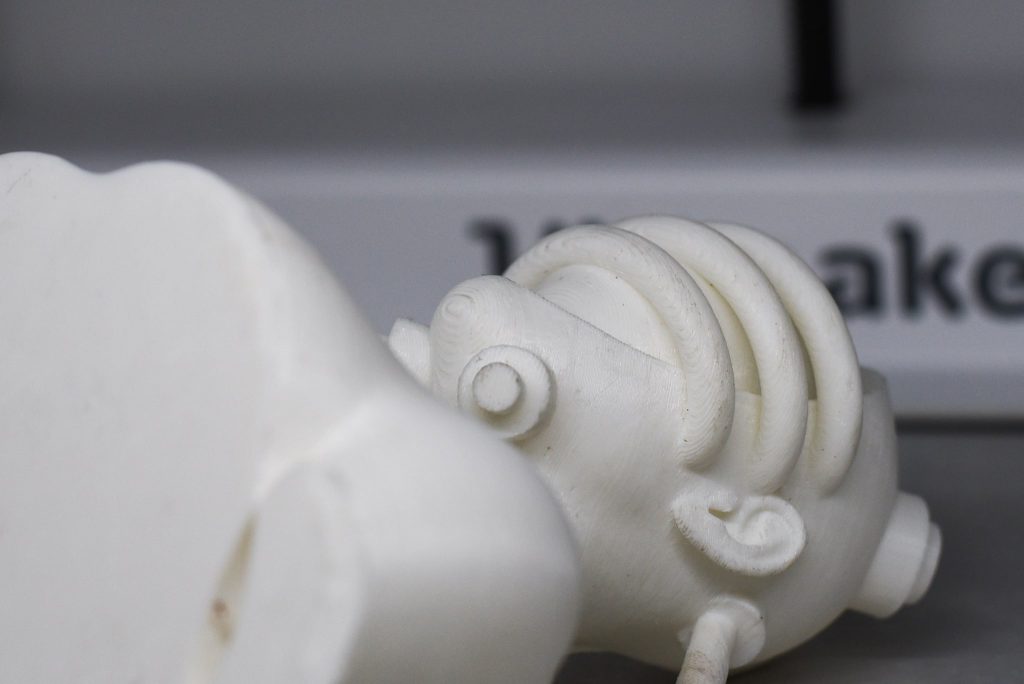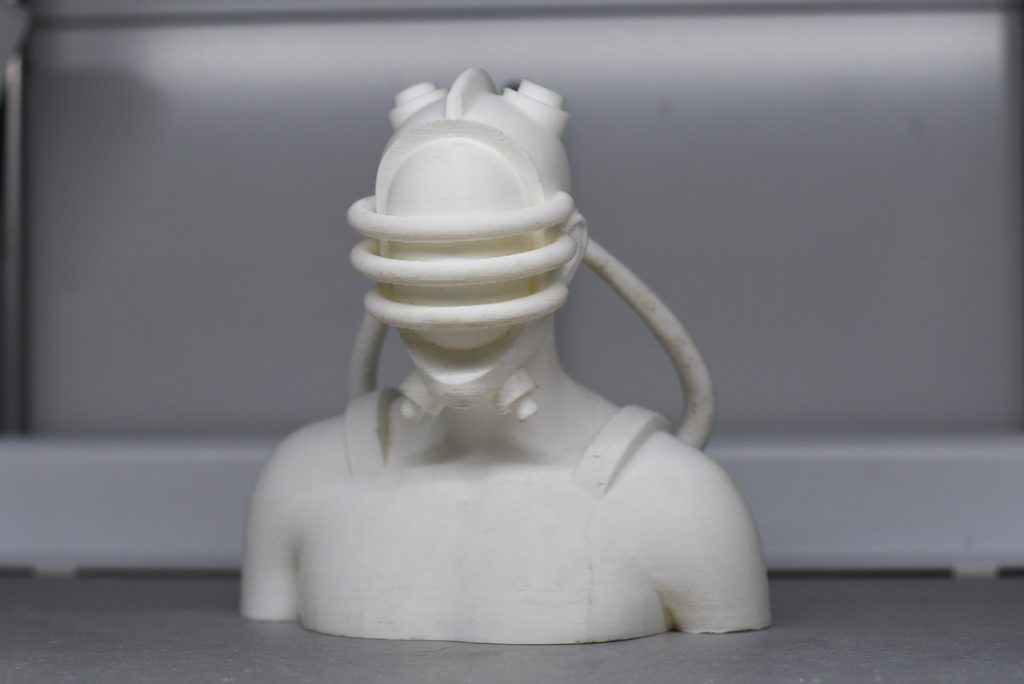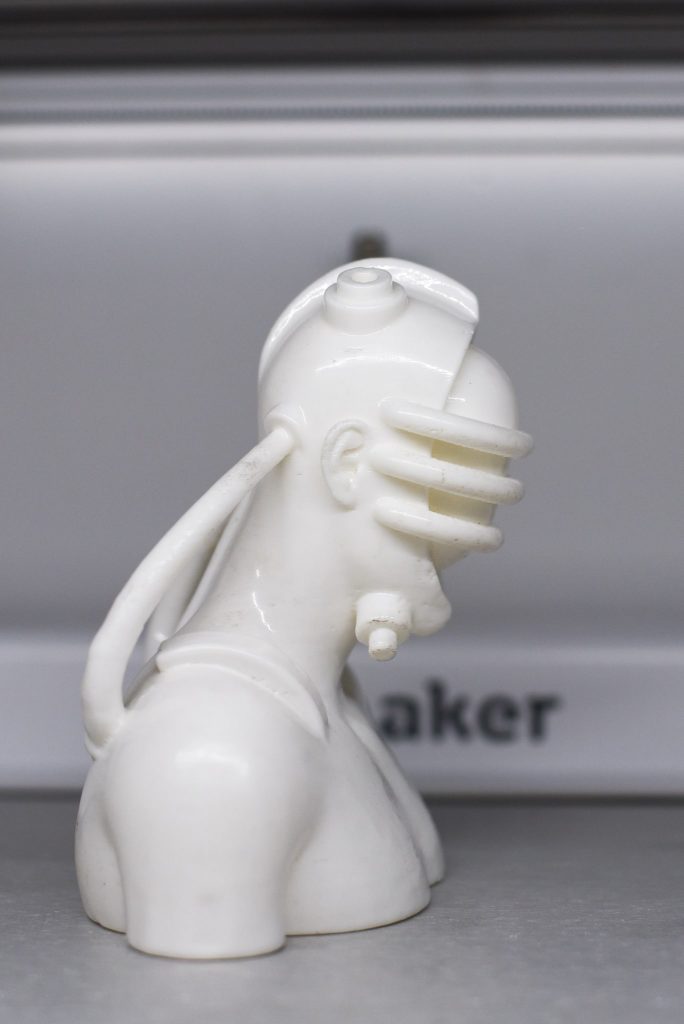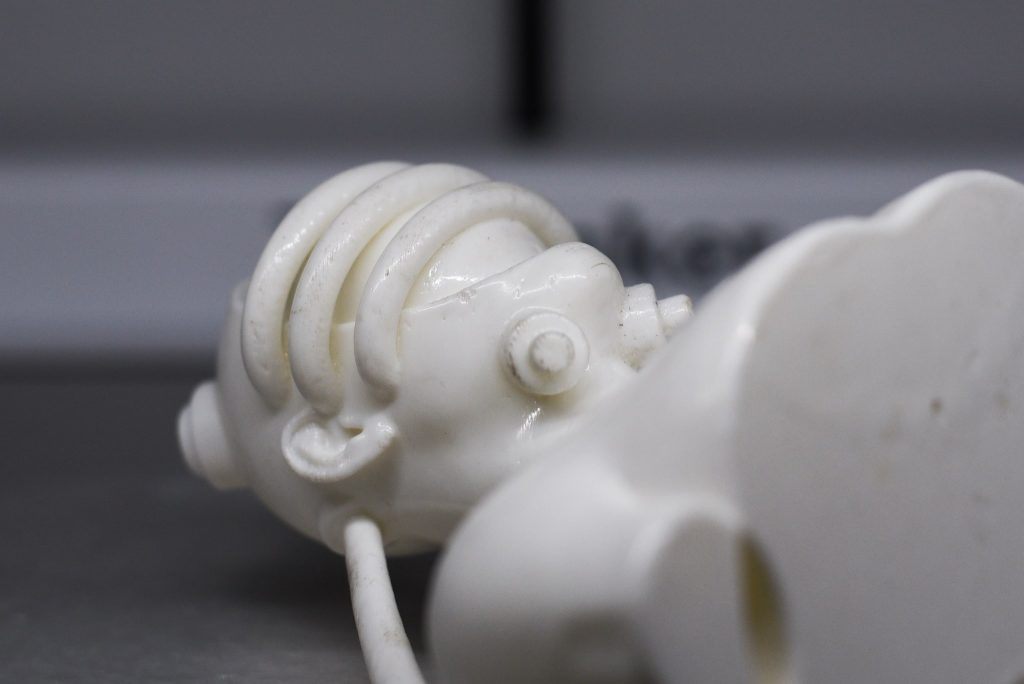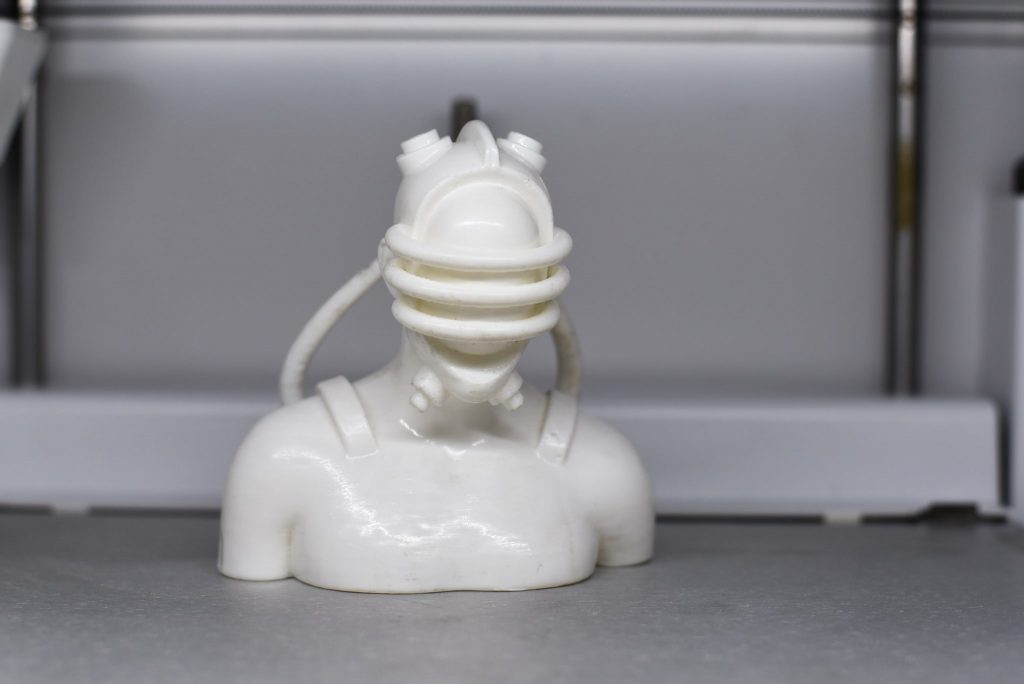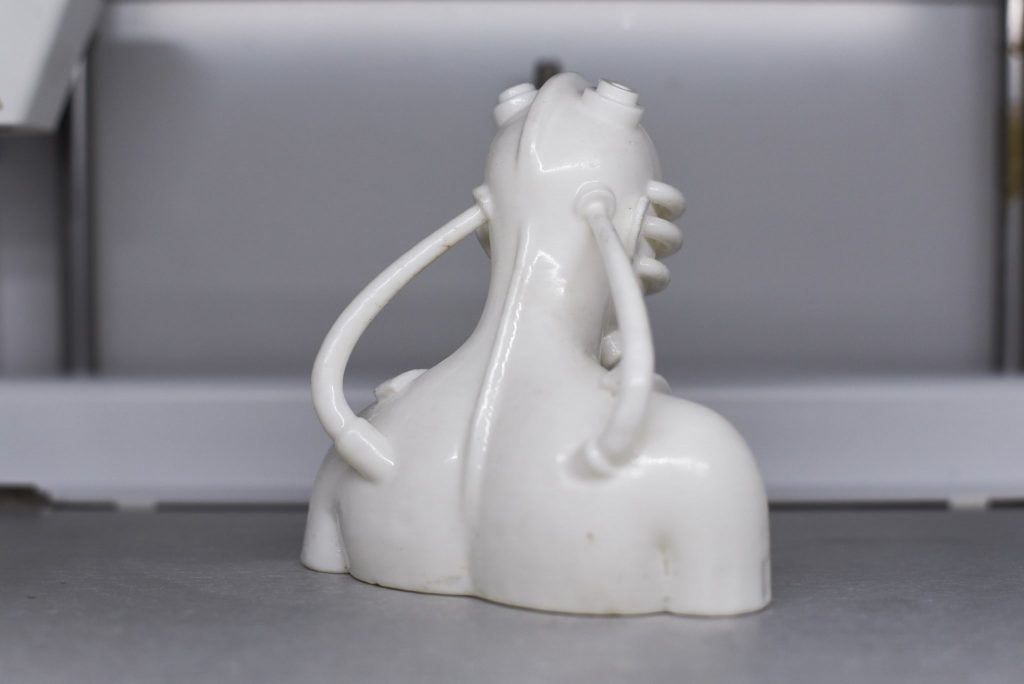Using Soluble Supports to improve Surface Finish of 3D prints
Using soluble support materials in the FDM process unlocks a whole new level of possibilities for producing intricate parts whilst also facilitating the process of support removal and the surface finish of sharp overhangs and bridges.
Soluble filaments are generally made of PVA (Poly Vinyl Alcohol) a water soluble thermoplastic which means that printed features can be easily dissolved in water after printing.
Investigating soluble support materials
Today, we will investigate how using soluble support materials, helps improve the surface finish of aesthetic models. We chose a model by a local artist In†rσwΣrks, who was having some difficulty getting the finish he desired. The difficult overhangs present in his model, were leaving nasty marks after support removal.
Artefacts at part-support interface – printed in Polymaker PolyLite red PLA on an Ultimaker2+
The model was printed on an Ultimaker S5 using white Polymaker ABS, since it will be vapor smoothed as well. The Kuraray MOWIFLEX 2000 was used as soluble support material. More information on this support material and others will be available in a future blog post!
Better surface finish at support to part interface
Since the soluble support material dissolves from the actual build material without much effort and more fully, the interface between the support and the part is much cleaner and has a better surface finish overall.
Using soluble supports gives an overall better surface finish at the support-part interface as shown below
The surface finish was then further improved with acetone vapor smoothing. More information on this process can be found in our blog post on ABS vapor smoothing.
The resulting print after the process of vapor smoothing.
The print shows some dark spots in certain areas, these are a result of blobs of darkened filament that got embedded into the print during printing. This happened since a prime tower was not used which caused pieces of filaments which ooze out of the nozzle to stick to the print. All the print needs now is a a few coats of fresh paint!
Why soluble support materials?
Soluble support materials are an interesting addition to 3D printing. Many complex geometries would be impossible to print without the addition of supports. Using normal materials for support structures, even when the support structures are well designed and printed, usually are quite a hassle to remove after print completion and more often then not require extra post processing, like sanding, in order to achieve a satisfactory finish. With soluble support materials, print quality is improved just like with normal supports, but in addition they are much simpler to remove and leave a much cleaner finish.
What processing or post-processing method would you like us to feature next? Let us know!
